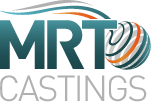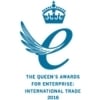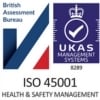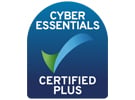This article was updated in November 2025 having originally been published in October 2021.
What are machining allowances and why do we need to consider them in the casting design process?
Some features and faces of your casting may need machining after casting, to achieve tighter dimensional or flatness tolerances than can be achieved in a raw casting. This may also be required to remove taper, gate witnesses, or rough cast faces. In short, it’s the process of precision we build into every cast component.
To ensure critical features are precisely consistent, there must be sufficient cast material on those faces in the design intent. This surplus - no matter how small - is removed at a later stage by the machining operation to produce a finely machined finished component. This allowance means the final casting will benefit from finely tuned operational capability.
On the other hand, too much machining allowance can increase machining content with no benefit. Worse still, it may increase the risk of uncovering casting defects if you are machining deeper into the part.
How are the machining allowances calculated?
The first thing to consider when deciding on a casting’s dimensional relationship is the die and mould construction. To get this right, collaboration between machinist and die designer is vital.
There is also an opportunity to reduce costs by placing casting feeders on areas which are to be machined; this minimises the need for fettling and eliminates feeder witnesses on the finished component.
The amount of material to be added is dependent on the overall size of the casting, the process selected and the part’s individual geometry. We’ve created this table to help:

Designers should select the line on the table showing the range within which the casting’s greatest dimension falls.
The values given in the above table are based on maximum ‘build-up’ or a ‘safety factor’ for average casting variations in flatness, squareness, concentricity, etc, as well as linear tolerance.
These values are the minimum recommended. Please note, Taper must be added to the above values, where required.
Ready to find out more?
Our ‘Notes for Designers’ guide goes into even more detail – Covering linear tolerances, flatness tolerances, minimum achievable section thickness, machine finish allowances and more.
Work with MRT Castings to optimise your design for precision machining.
Our experts help you balance machining allowances with die casting tolerances for cost-effective, high-quality components.
If you have any questions, our friendly and experienced team will be more than happy to help. Get in touch now.









